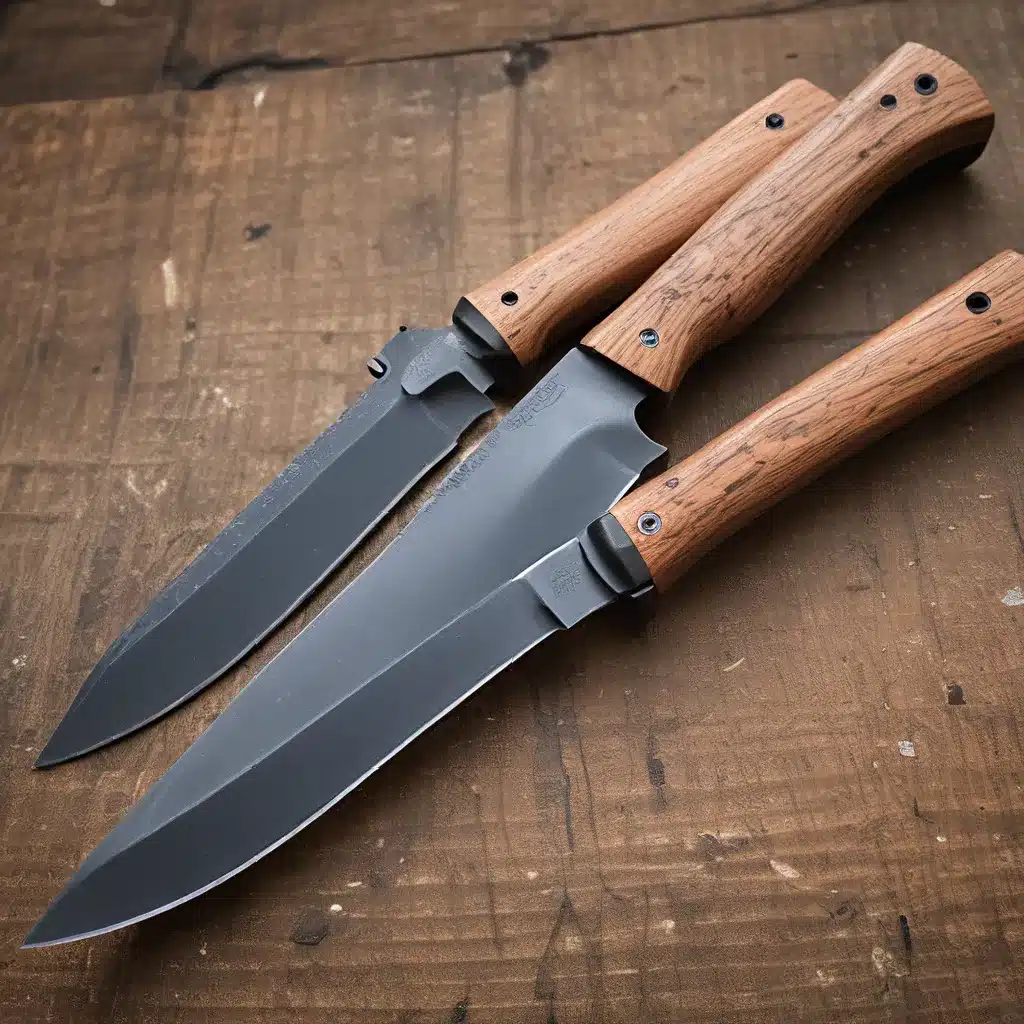
Forging Ahead: Embracing Failures in Knifemaking
As a passionate knife maker, I’ve had my fair share of triumphs and tribulations in the forge. The journey to creating the perfect blade is paved with countless lessons, and I’ve learned that it’s not the failures that define us, but how we overcome them. In this article, I’ll share some of the most common mistakes I’ve encountered and the valuable insights I’ve gained along the way.
Forgotten Passwords and Locked Accounts
One of the most frustrating experiences for any knife maker is the dreaded forgotten password. It’s a scenario I’ve found myself in more times than I care to admit. As I’ve learned the hard way, losing access to your online accounts can be a major setback, especially when you rely on them for essential resources, community support, or even marketing your creations.
The solution, of course, is to establish a robust password management system. I now use a password manager, which not only generates strong, unique passwords for each account but also stores them securely. This has saved me countless headaches and allowed me to focus on what really matters – perfecting my craft.
Failing the Master Smith Test
One of the most prestigious achievements in the knifemaking world is the American Bladesmith Society’s (ABS) Master Smith certification. It’s a rigorous test that separates the true masters from the rest of us. Unfortunately, I’ve witnessed many talented knife makers fall short of this lofty goal.
The reasons for failure can vary, but often it comes down to a lack of preparation or an inability to adapt to the high-pressure testing environment. As someone who has faced this challenge myself, I can attest to the crushing disappointment and self-doubt that can come with it.
However, I’ve also seen knife makers bounce back stronger than ever. The key is to approach failures with a growth mindset, using them as opportunities to identify weaknesses and make targeted improvements. With dedication, resilience, and a willingness to learn from mistakes, even the most daunting obstacles can be overcome.
The Dangers of Overconfidence
In the realm of knife making, it’s easy to fall into the trap of overconfidence. As I’ve witnessed in my own classes, some students become so enamored with their early successes that they lose sight of the fundamentals. They start taking shortcuts, overlooking crucial details, and ultimately producing subpar work.
I’ve seen it happen time and time again – the knife that breaks during heat treatment, the blade that warps beyond repair, or the handle that falls apart after a few uses. These failures are often the result of a misguided sense of mastery, where the maker becomes overconfident in their abilities and neglects the essential steps that ensure long-lasting, high-quality knives.
The antidote to overconfidence is humility. As a maker, I’ve learned to approach each project with a beginner’s mindset, constantly striving to improve my skills and learn new techniques. By maintaining a healthy dose of skepticism and a willingness to seek guidance from more experienced craftspeople, I’ve been able to avoid the pitfalls of overconfidence and consistently produce knives that stand the test of time.
Embracing the Forge’s Forge
One of the most valuable lessons I’ve learned in my journey as a knife maker is the art of embracing failures. It’s a concept that may seem counterintuitive, but in the world of knifemaking, failures are not just inevitable – they’re essential to growth and improvement.
Think of the forge itself as a metaphor for this process. The intense heat, the pounding of the hammer, and the shaping of the metal – all of these elements are necessary to transform a raw piece of steel into a masterful blade. And just as the forge is essential to the knife-making process, so too are the failures and challenges that we face along the way.
Every time a knife doesn’t turn out as planned, every time a technique falls short, or every time a design flaw is exposed, it’s an opportunity to learn, to grow, and to become a better maker. It’s in these moments of adversity that we are forged, tempered, and sharpened, emerging stronger and more capable than before.
Conclusion: Embracing the Forge’s Forge
The path to becoming a master knife maker is not an easy one, but it is a journey worth taking. By embracing the lessons learned from our mistakes, we can transform them into opportunities for growth and improvement. Whether it’s a forgotten password, a failed certification test, or the consequences of overconfidence, each challenge we face is a chance to deepen our understanding, refine our skills, and create knives that truly stand the test of time.
As you embark on your own knifemaking journey, remember to approach each setback with a resilient mindset. Treat your failures as the forge’s forge, tempering your skills and sharpening your edge. With dedication, perseverance, and a willingness to learn, you too can become a knife maker whose creations are not just functional, but a testament to the power of embracing the unexpected.
And who knows, perhaps one day you’ll find yourself exploring the wide range of high-quality knives that have been forged through the crucible of experience. The journey is just as rewarding as the destination, so embrace the challenges, learn from your mistakes, and forge ahead with confidence.


